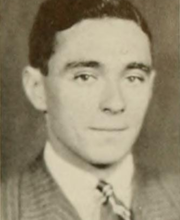Jerome Bruner
Perceptual Organization, Cognition, and Learning Theory
The Role of Narrative in Psychology and Law

“Any subject can be taught effectively in some intellectually honest form to any child at any stage of development.”
– from The Process of Education
Jerome Bruner was a leader of the Cognitive Revolution (pdf) that ended the reign of behaviorism in American psychological research and put cognition at the center of the field. He received his Ph.D. from Harvard in 1941, and returned to lecture at Harvard in 1945, after serving in the U.S. Army’s Intelligence Corps. By 1952 Bruner was a full Professor the Department of Social Relations. In 1960 he co-founded the interdisciplinary, iconoclastic Center for Cognitive Studies at Harvard, serving with George Miller as co-director, until he departed the university in 1972 to take a position at Oxford University.
In the course of his three decades at Harvard, Bruner published works on perceptual organization, cognition, and learning theory, all of which departed dramatically from the deliberate mind-blindness of behaviorism, by emphasizing the importance of strategies and mental representations in the processing of real-world phenomena. His seminal 1956 book, A Study of Thinking (co-written with Jacqueline Goodnow and George Austin), reported results from a series of studies investigating concept formation. Bruner et al.’s concept formation tasks have been used in countless studies by subsequent researchers.
Equally influential were Bruner’s investigations of children’s cognitive development. He proposed a 3-tiered system of internal representations: enactive (action-based), iconic (image-based), and symbolic (language-based).
Bruner also postulated that internal representations could be combined to produce different types of thought. His theory differentiated between “narrative thought” (temporally/causally sequential, focused on details and action) and “paradigmatic thought”(mental categorization by recognizing abstract, systematic similarities of unrelated phenomena). Bruner’s theory of cognitive development was distinct from other stage-based theories of cognition, as it held that even young children can learn difficult concepts with appropriate instructional support, and it readily lent itself to practical educational applications, which Bruner himself helped to design and implement.
Bruner’s explorations of learning and cognitive development have changed the field, and his enthusiastic support of cross-disciplinary research fostered the work of many colleagues and students. According to his colleague Roger Brown, “Bruner had the gift of providing rare intellectual stimulus, but also the rarer gift of giving colleagues the sense that problems of great antiquity were on the verge of solution by the group there assembled that very afternoon.”
Jerome Bruner is listed at number 28 on the American Psychological Association’s list of the 100 most eminent psychologists of the 20th century.
Sources
Bruner, J.S. & Goodman, C.C. (1947). Value and need as organizing factors in perception. Journal of Abnormal and Social Psychology, 42, 33-44
Cohen-Cole, J. (2007). Instituting the science of mind: intellectual economies and disciplinary exchange at Harvard’s Center for Cognitive Studies. British Journal of the History of Science 40(4), pp. 567-597.
Eminent psychologists of the 20th century. (July/August, 2002). Monitor on Psychology, 33(7), p.29.